A Way of Life in the USA
Hunting is a way of life in the United States, and we are here to help you be as successful on the hunt as possible.
Reviews of the Best Trail Cameras for 2017
Avid hunters rely on trail cameras to provide them with the information they need to take the guesswork out of tracking and finding game during hunting seasons. Motion-activated cameras reveal where and when animals are grazing, watering, feeding, bedding down and roaming. Hunters can gain advantages with these types of cameras (which are also called game cameras) as to animal locations as well as strategize for hunting camp layouts and plot GPS coordinates for return trips to different locations and campsites.
Outside of hunting, the security aspect of trail cameras allows for safety precautions around urban homes and business areas as well as for rural home, farm, and ranch properties that are regularly monitored by concerned owners. They are used not only to account for stray, lost or animal predators that might be roaming their lands and causing damage, loss, or threats against cattle, sheep, horses and domestic animals, but those living in rural and urban areas have found trail cameras to be excellent for securing their homes and properties against invasion or theft.
Contents
- Use of a Trail Camera
- Types of Trail Cameras
- Trail Camera Overview
- Most Important Features
- Additional Features
- After Purchase Support
- Top Trail Camera Brands
- How to Use a Trail Camera
- Best Overall Trail Camera
- Best Trail Camera for the Money
- Best Trail Camera under $100
- Best Trail Camera under $200
- Best Wireless Trail Camera
- Best Infrared Trail Camera
- Best Trail Camera with Night Vision
- Trail Camera Concerns and Tips
- Conclusion
Other uses for trail cameras are through animal management agencies that use them to track, follow, and keep account of animal habitats, animal migrations, tagged animals, endangered animals, and predatory animals. Remotely viewing and observing wildlife through trail cameras is an efficient way to manage animal movement in isolated and confined land areas.
Whether for hunting use, rural or urban security concerns, animal management, or just taking animal related pictures in a remote area, trail cameras are an efficient and practical means to accomplish a number of tasks without a lot of extra time expended wandering around and remembering where you saw an animal or group of animals, when you saw them, and how you’re going to recall exact locations for tracking purposes.
When choosing a trail camera, you want to consider how the camera is going to be used, its type, design, size, portability, affordability, placement ease, image quality, detection, and other features; along with whether there is strong follow up support concerning warranties and other issues.
Use of a Trail Camera
One of the most important factors to be considered when purchasing a trail camera is how the camera is going to be used. Many people, usually hunters or game enthusiasts, simply want a trail camera to provide them with an additional tool to scout a number of areas for signs of game at feeders, along game trails and other areas. A trail camera or several cameras allow hunters to cover a wide range of possibilities for wildlife sightings. Others want game cameras for a way to view endangered or rare wildlife and document their findings, and state or government agencies utilize trail cameras to provide wildlife management services. Still others want game cameras as a means of security to protect their businesses or personal property. Whatever the reason for purchasing trail cameras, there are many available that fit any of these categories of use.
Types of Trail Cameras
The main types of trail cameras are categorized by the flash technology they use. They include:
Infrared Flash
Trail cameras with infrared flash capability are perfect for taking nighttime photos. The flash is not obvious, so there is little possibility of an animal seeing the flash or another hunter viewing it while pictures are actually being snapped. Images are carefully taken and are refreshed quickly between shots. Infrared cameras can also have invisible infrared flash, and they have longer battery life as well.
Incandescent Flash
A trail camera with this kind of flash provides good, quality color pictures and visual detailing. It is the type of flash that hunters need if they want to hone in on finer points with the game they are tracking.
Trail Camera Overview
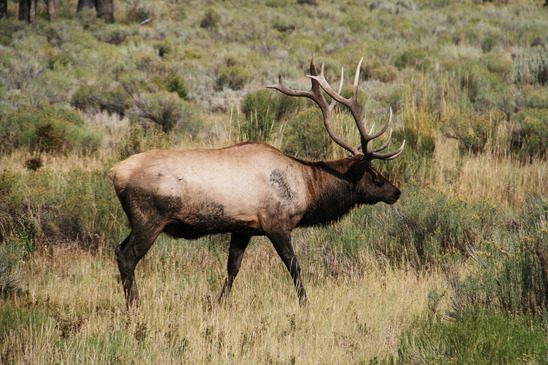 An actual trail or game camera should be a sturdy, motion-activated camera that is specifically designed to take pictures and videos of wildlife. Many trail cameras can take both photos and short videos. They are housed in plastic and are rectangular in shape and are usually a little under six (6) inches tall and six (6) inches wide. Most hunting enthusiasts who utilize trail cameras strap them to a tree and use the accompanying tree strap that is provided with the camera, but there are other sturdier, longer and security minded straps for use, as well as special stands, tripod mounts and other devices to use if you want to place the camera in an open area. For standing purposes, a game camera should be positioned at least three to four feet above ground for capturing game photos.
An actual trail or game camera should be a sturdy, motion-activated camera that is specifically designed to take pictures and videos of wildlife. Many trail cameras can take both photos and short videos. They are housed in plastic and are rectangular in shape and are usually a little under six (6) inches tall and six (6) inches wide. Most hunting enthusiasts who utilize trail cameras strap them to a tree and use the accompanying tree strap that is provided with the camera, but there are other sturdier, longer and security minded straps for use, as well as special stands, tripod mounts and other devices to use if you want to place the camera in an open area. For standing purposes, a game camera should be positioned at least three to four feet above ground for capturing game photos.
Trail cameras consist of a motion detector and a digital camera. The motion detector part of the camera utilizes infrared technology that senses movement and triggers the camera. The camera itself then takes a picture or starts video recording. If trying to capture pictures at night, the camera will use infrared LEDs to take black and white night vision photos.
The majority of trail cameras today store captured photos and videos on an SD card (Secure Digital card), which is a small memory card that enables portable storage for various devices, including a trail camera. Every few weeks, the card can be checked to see whether game activity has occurred.
More expensive trail cameras (wireless) are available and they transfer their photo data through a cellular data connection that emails you the pictures that are taken. This process requires a data subscription plan that can run between $10 and $20 a month.
Most Important Features
The most important features to be aware of with any trail camera include:
Design
The design of a trail camera includes dimensions (size), battery capacity compartment, power input jack, and the exterior covering.
Dimensions
Dimensions of trail cameras average 6 inches in height, 5 inches in width, and 3-1/2 inches in depth, though there are larger cameras that range from 7, 8 and 9 inches in height. They are usually rectangular in nature but may have redesigned, rounded effects on the upper part of the units.
Battery Life
The battery capacity of a trail camera is defined by the type of battery the camera uses and how many batteries it requires. Most trail cameras require 6-8 double AA batteries, or 6 C batteries, or 4 D batteries. Lithium batteries are recommended by most trail camera makers.
For external battery use, decide on a battery option ahead of time. Most trail cameras contain a 6V or 12V input for external battery use, which means less time spent recharging your camera. There are even solar panel power offerings that will save operating costs, which will equip the camera with consistent power.
The battery life is of importance when choosing a trail camera as this will demonstrate how long the camera can track and how many pictures it will take. Actual still photo imaging uses less battery power than a video mode.
Power Input Jack
A power input jack indicates that the trail camera can be plugged into an external battery pack in order to save battery life. (Many trail cameras have either a 6V (volt) or 12V input for an external battery recharging.)
Exterior Covering
The exterior of a trail camera should be waterproof and watertight or of solid enough construction that it can withstand rough weather and environmental conditions that might cause deterioration of the outside shell or affect the inner workings of the camera. Exterior color choices come in camouflage, brown, green, deep gray and other colors associated with natural settings. There are additional outer shells available for further protection.
Image quality
Image quality entails the camera lens itself, field of view in degrees, flash range in feet, picture resolution in megapixels, and video resolution in megapixels.
With photo image quality, trail cameras usually have a picture resolution of 8 megapixels and a video resolution of 720p. Among most trail cameras there is not a lot of difference in picture quality. The largest differences with trail cameras are their fields of view. Field of view refers to how wide the angle of view is on the camera and the wider the field of view, the more that will be captured in a frame. The best trail cameras have a field of view of 55 degrees, and lesser cameras have fields of view of 42 degrees. There is a significant difference between the field of view in more upscale trail cameras as they can capture much more than a 42 degree camera.
Detection
Detection includes detection range in feet, detection angle in degrees, trigger speed in seconds, and recovery time in seconds.
A trail camera’s detection area or circuit is made up of both the detection angle and the detection range, and the differentiation with most trail cameras is their individual detection circuits, which are gauged by size and speed. A larger detection area or zone will allow more pictures to be captured. Detection angles are also associated with fields of view, and if a trail camera has a field of view of 55 degrees, there will be a detection angle of 55 degrees. Detection range signifies how far away the camera is able to detect movement. A good trail camera should have a detection range of at least 50 feet.
Speed with a trail camera refers to both the trigger time and the recovery time. Trigger time is the length of time it takes for motion to be detected coupled with the moment the picture is taken. Trigger times for better cameras are usually less than two seconds. Recovery time refers to the length of time it takes, after the picture is taken, for the camera to ready itself to be triggered again. Good recovery times should be less than five seconds, but can go up to a minute.
Trail cameras with good detection circuits should be equipped with a favorable mix of size and speed.
Additional Features
Additional features with trail cameras include multi-shot mode, time lapse mode, rapid fire mode, audio, and invisible infrared flash.
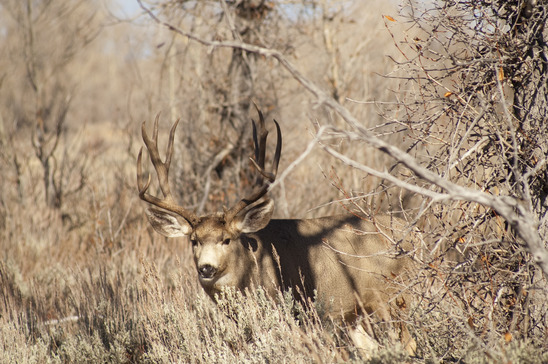 Multi-shot – With a trail camera, the multi-shot mode allows the trail camera to take multiple pictures each time it is triggered. The camera can be programmed to take up to 8 images per trigger and each shot is approximately 3 seconds apart.
Multi-shot – With a trail camera, the multi-shot mode allows the trail camera to take multiple pictures each time it is triggered. The camera can be programmed to take up to 8 images per trigger and each shot is approximately 3 seconds apart.
Time Lapse – Time lapse mode is valuable when setting up of a trail camera in a new location such as a field or other large area, particularly when you are not sure from what location game are entering the area. In time lapse mode, the camera will take photos of the field at designated intervals, which will record pictures of an animal or animals that may have been at too great a distance to trigger the camera.
Rapid fire mode – Rapid fire mode is comparable to the multi-shot mode. When the camera is triggered by movement, the rapid fire mode will shoot up to 6 pictures in a heightened burst of pictures, 0.3 seconds apart.
Audio – There are trail cameras with audio incorporated within their video systems for a more meaningful viewing experience that is enhanced with the added sound of animal movement and other sounds of nature.
Invisible infrared flash – Invisible infrared flash trail cameras contain a shield which makes the red infrared invisible. If you want to use this type of camera for surveillance, a shielded one is recommended.
After Purchase Support
After purchase support of a trail camera usually involves length of warranty, company email and phone support, and an included instructional manual.
Most companies that warranty trail cameras cover them for at least a year and some two, and they usually warrant that the camera will be free from any kind of workmanship or material defects when the device is operated normally and utilized under normal conditions. Most warranties will cover a trail camera for repair work or replace it with a new or refurbished device.
For customer support, most trail camera companies have both customer service phone and email support lines for questions, concerns, problems and other issues.
Instructional manuals are included with new trail cameras and they usually provide detailed operation instructions as well as troubleshooting and FAQ sections to answer any questions. Most manuals point out that problems with trail cameras are easily answered most of the time by just changing or adjusting a setting, but if a problem continues, customer support is always available.
Top Trail Camera Brands
Trail cameras run the gamut from top to mid and lower price ranges that sell from $60-$600+, which include top brands and other best selling trail camera brands.
The leading or top brands for trail cameras can be found through the following companies:
- Moultrie – Moultrie consistently offers an entire line of quality trail cameras and wildlife feeders.
- Bushnell – Bushnell’s specialty has always been outdoor optics (binoculars) and imaging, but their addition of trail cameras has become a successful venture as well.
- Primos – Primos is known for its duck calls and this family-owned company has included innovative trail cameras to its inventory of products
- Browning – Browning not only manufacturers sporting goods and firearms but has successfully produced trail cameras as well.
Other popular and mid to lower level trail cameras are available through the following companies:
- Stealth Cam
- Reconyx
- Spypoint
- Wildgame Innovations
- Crenova
- Amcrest
- Bestguarder
- Cuddeback
- Plotwatcher
- Simmons
- Covert
How to Use a Trail Camera
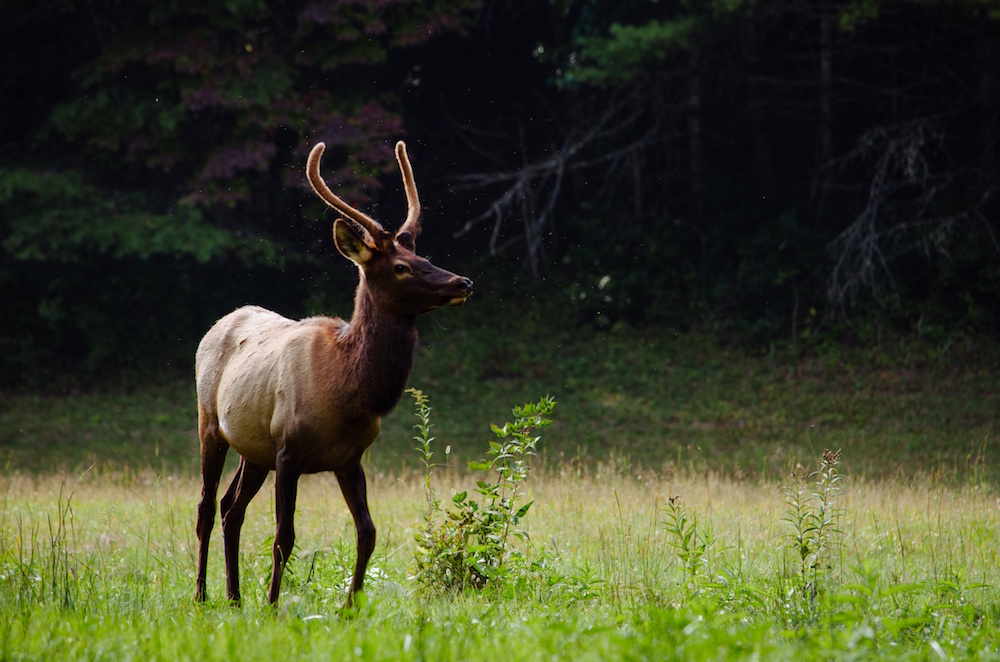 Before using a trail camera, you obviously want to purchase one that meets your needs and budget. Before actually using the camera and setting it up in the field or other locations, thoroughly read the instructional manual that comes with the camera and keep it within reach when set up or difficulties using the device arise. If there are unsolvable problems, use the help phone and email lines that are available through the trail camera company.
Before using a trail camera, you obviously want to purchase one that meets your needs and budget. Before actually using the camera and setting it up in the field or other locations, thoroughly read the instructional manual that comes with the camera and keep it within reach when set up or difficulties using the device arise. If there are unsolvable problems, use the help phone and email lines that are available through the trail camera company.
- Inputting camera settings involves following the instructional manual guidelines and identifying the various input devices for setting up the camera for operation. A few trail cameras require simple set up, have automatic set up and others are more detailed.
- Up to a 32 GB SD or SDHC memory card can be used to store photos on trail cameras. There are many SD cards to choose from, but SanDisk is the most reliable of many for simple plug in to the trail camera. The SD card is automatically recognized by the unit for storage.
- If you are simply going to use the camera for static images, you probably won’t have as much interest in purchasing a high-end video camera, unless you specifically need it for recording better quality video/photo images. If so, make sure you look for one with a long battery life or a hook up to external batteries to keep the camera operating indefinitely.
- Find game trails close to streams, ponds or other areas where animals congregate and select a hidden position for your camera. The ground around game trails appears worn and is a good indication of animal movement.
- A game camera should be attached to a tree facing an approximate 45 degree angle to the game trail area. When you place the camera in this direction, the trigger time is increased which gives a better view of the animal (s). If the camera is hung in a straight up and down position to the trail (perpendicular), the camera’s sensor may take increased time to awaken and trigger, which results in a picture of the animal’s rear portion or no picture at all due to the animal passing through the frame before the camera was triggered. The angled position of the camera is the way to get the shot.
- The camera should be set according to your comings and goings in the game area. If you are going to check it on a daily basis, you should probably use higher settings because you won’t need as much time on the memory card or the camera’s built-in memory. If you are going to be away from the camera for extended periods of time, set it on a lower quality.
- The motion sensor of the camera should be set if you want the sensor to only respond when animals are out, about, and moving. There are also some cameras that can be set at intervals to take pictures, ranging from a minute to an hour. Images will only be taken at those intervals, which prevent too many pictures from being taken, particularly if you are away from the area for any length of time.
- Keep track of and collect your camera data on a regular basis. Cameras with screens allow you to view the images through their time-stamp codes. With other cameras, you can remove the memory card and view the images through a card reader or connect the camera directly to a laptop through the USB port. If you are looking at the images through time codes, you will be able to tell about what time the animals were passing through the game trail area.
Best Overall Trail Camera
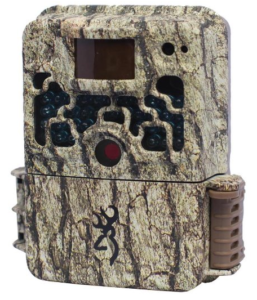 The Browning Strike Force Sub Micro 10 MP Game Camera is a high performance camera and is one of the smallest cameras on the market, but it is packed with features. It has an extremely fast detection circuit and superb picture quality. It is also affordable with an average price of $135. The Browning Strike Force takes images with a 10 megapixels resolution, which is good for zooming in on photos and viewing them without graininess. The field of view angle measurement is 55 degrees, which ensures more than enough room for capturing wildlife. The camera’s infrared flash has an outstanding range of 100 feet that allows for detection and high illumination quality. In video mode the camera captures video in a standard resolution of 720p, which does allow for pausing and zooming in on game without loss of details. The photo quality with the Strike Force is impressive and pictures and videos are clear and crisp whether taken in day or nighttime hours. Detection range is above average at 50 feet and its detection angle is 55 degrees which is large enough to provide necessary coverage. The trigger speed is 0.67, which is the quickest compared to other cameras and will allow for capturing an animal, even when it is on the run. The camera’s recovery time is 2.3 seconds which allows the camera to recover, sense movement, and take another picture very quickly. Additional features include two multi-shot modes that have a regular setting along with a Rapid Fire mode that will take up to six (6) images at time, with each image only 0.3 seconds apart. There is also a time-lapse mode that allows for taking pictures at intervals, and there is an audio feature that accompanies video clips so you can see and hear what is occurring on a clip. This small, action packed camera, measures 4.5 x 2.5 x 3.2 inches, weighs 1 pound and comes with a camouflage, waterproof case. It has an external power jack for additional power refreshing, and the unit runs on six (6) AA batteries, which should last for a number of months. It is user friendly with a direct interface and a monochrome screen for setting adjustments.
The Browning Strike Force Sub Micro 10 MP Game Camera is a high performance camera and is one of the smallest cameras on the market, but it is packed with features. It has an extremely fast detection circuit and superb picture quality. It is also affordable with an average price of $135. The Browning Strike Force takes images with a 10 megapixels resolution, which is good for zooming in on photos and viewing them without graininess. The field of view angle measurement is 55 degrees, which ensures more than enough room for capturing wildlife. The camera’s infrared flash has an outstanding range of 100 feet that allows for detection and high illumination quality. In video mode the camera captures video in a standard resolution of 720p, which does allow for pausing and zooming in on game without loss of details. The photo quality with the Strike Force is impressive and pictures and videos are clear and crisp whether taken in day or nighttime hours. Detection range is above average at 50 feet and its detection angle is 55 degrees which is large enough to provide necessary coverage. The trigger speed is 0.67, which is the quickest compared to other cameras and will allow for capturing an animal, even when it is on the run. The camera’s recovery time is 2.3 seconds which allows the camera to recover, sense movement, and take another picture very quickly. Additional features include two multi-shot modes that have a regular setting along with a Rapid Fire mode that will take up to six (6) images at time, with each image only 0.3 seconds apart. There is also a time-lapse mode that allows for taking pictures at intervals, and there is an audio feature that accompanies video clips so you can see and hear what is occurring on a clip. This small, action packed camera, measures 4.5 x 2.5 x 3.2 inches, weighs 1 pound and comes with a camouflage, waterproof case. It has an external power jack for additional power refreshing, and the unit runs on six (6) AA batteries, which should last for a number of months. It is user friendly with a direct interface and a monochrome screen for setting adjustments.
Best Trail Camera for the Money
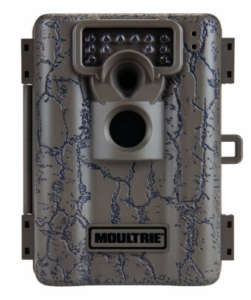 The Moultrie A-5 Low Glow Game Camera is a good value for the money. It averages in price from $50-$90. It is affordable and reliable as well as easy to use and is packed with innumerable features. It has a tough, durable weather resistant rounded case and updated electronics, and the camera has an easy interface that provides exceptional picture quality whether day or night, with 5 MP (megapixels) resolutions. The camera is equipped with Infrared flash technology that is long-range 850nm Infrared LED, and it has a 50 feet flash range for capturing quality nighttime images. Its Passive Infrared Sensor improves detection range with fewer false triggers. The camera has a trigger speed of less than 1.5 seconds and a detection range of 40 feet, which allows for capturing clear and sharp images. Detection delay is decreased from a minute to 10 seconds. There are also selectable 3-image multi-shot and single-image settings that add to the versatility of this trail camera. It is perfect for the budget-minded hunter scouting for game. It runs on 8 AA batteries and has a battery life of 16,000 images. It measures 5.9 x 2.3 x 7.2, weighs 13.6 ounces and has a dark green outer color.
The Moultrie A-5 Low Glow Game Camera is a good value for the money. It averages in price from $50-$90. It is affordable and reliable as well as easy to use and is packed with innumerable features. It has a tough, durable weather resistant rounded case and updated electronics, and the camera has an easy interface that provides exceptional picture quality whether day or night, with 5 MP (megapixels) resolutions. The camera is equipped with Infrared flash technology that is long-range 850nm Infrared LED, and it has a 50 feet flash range for capturing quality nighttime images. Its Passive Infrared Sensor improves detection range with fewer false triggers. The camera has a trigger speed of less than 1.5 seconds and a detection range of 40 feet, which allows for capturing clear and sharp images. Detection delay is decreased from a minute to 10 seconds. There are also selectable 3-image multi-shot and single-image settings that add to the versatility of this trail camera. It is perfect for the budget-minded hunter scouting for game. It runs on 8 AA batteries and has a battery life of 16,000 images. It measures 5.9 x 2.3 x 7.2, weighs 13.6 ounces and has a dark green outer color.
Best Trail Camera under $100
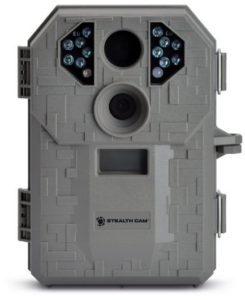 The Stealth Cam STC-P12 is a performer as well as a budget-friendly trail camera. It averages in price from $58-$90. It is a compact 6.0 MP (megapixels) scouting camera that has 12 Infrared emitters at a 50-foot range that easily captures a wide array of animal activity. The camera has a 15-second video function coupled with audio as well as a time lapse function. The camera is energy efficient and designed with time saving features. A Burst Rapid-Fire Mode and Quick Set for efficient, fast, and simple set up add to its efficiency, and in addition to the Burst Mode, it produces 1-6 images per triggering that features 5-59 seconds/1-59 minute recovery time out along with a time, date and moon phase stamp. This tight little digital 3-D with camouflage covering is easily concealed for use in the field. The camera is equipped with a mini USB output that enables downloading wherever necessary. Programming input on the Stealth Cam P12 is easy with it Quick Set dial that contains pre-set modes as well as a manual set-up mode, all of which helps to deter the frustration of having to spend extra time with set up in the field. The camera measures 10.00 x 7.75 x 2, weighs approximately 4 pounds and has a tree bark (dark gray) outer color.
The Stealth Cam STC-P12 is a performer as well as a budget-friendly trail camera. It averages in price from $58-$90. It is a compact 6.0 MP (megapixels) scouting camera that has 12 Infrared emitters at a 50-foot range that easily captures a wide array of animal activity. The camera has a 15-second video function coupled with audio as well as a time lapse function. The camera is energy efficient and designed with time saving features. A Burst Rapid-Fire Mode and Quick Set for efficient, fast, and simple set up add to its efficiency, and in addition to the Burst Mode, it produces 1-6 images per triggering that features 5-59 seconds/1-59 minute recovery time out along with a time, date and moon phase stamp. This tight little digital 3-D with camouflage covering is easily concealed for use in the field. The camera is equipped with a mini USB output that enables downloading wherever necessary. Programming input on the Stealth Cam P12 is easy with it Quick Set dial that contains pre-set modes as well as a manual set-up mode, all of which helps to deter the frustration of having to spend extra time with set up in the field. The camera measures 10.00 x 7.75 x 2, weighs approximately 4 pounds and has a tree bark (dark gray) outer color.
Best Trail Camera under $200
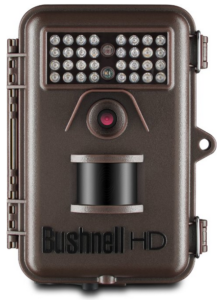 The Bushnell Trophy Cam HD Essential is one of the best trail cameras available due to its exceptional image quality along with its unbelievably fast detection circuit with a 0.3-second trigger speed, and a one-second recovery time. The camera’s larger than average size detection zone also puts it above similar cameras in this price range ($139 average). With a 12 MP resolution and a detection range of 80 feet, a hunter is able to gain more wildlife photos than other cameras. The camera has a horizontal view and detection angle of 55 degrees, a bank of 32 infrared LEDs that are able to illuminate animals from 80 feet, and a 12 megapixels resolution that enables zoom ability with photos, without reduction in quality. This trail camera is also able to take video in 720p HD, which is good resolution for game images taken during daylight hours. Additional features with the camera include a multi-shot mode that allows programming for one, two or three shots per trigger, which does ensure multiple angle shots of animals. There is also a hybrid mode (Hybrid Capture) for time-lapse that works with movement-triggered pictures and time-triggered photos. It can be positioned to trigger at intervals from one time per minute to one time per hour. The camera has a black and white LCD screen, utilizes 8 AA batteries and has a power jack so that another power source can be attached to lengthen battery life. The camera comes with a nylon belt for securing to a tree, and the unit has a dull brown color that blends well with trees and other surroundings. The camera measures 6 x 4 inches.
The Bushnell Trophy Cam HD Essential is one of the best trail cameras available due to its exceptional image quality along with its unbelievably fast detection circuit with a 0.3-second trigger speed, and a one-second recovery time. The camera’s larger than average size detection zone also puts it above similar cameras in this price range ($139 average). With a 12 MP resolution and a detection range of 80 feet, a hunter is able to gain more wildlife photos than other cameras. The camera has a horizontal view and detection angle of 55 degrees, a bank of 32 infrared LEDs that are able to illuminate animals from 80 feet, and a 12 megapixels resolution that enables zoom ability with photos, without reduction in quality. This trail camera is also able to take video in 720p HD, which is good resolution for game images taken during daylight hours. Additional features with the camera include a multi-shot mode that allows programming for one, two or three shots per trigger, which does ensure multiple angle shots of animals. There is also a hybrid mode (Hybrid Capture) for time-lapse that works with movement-triggered pictures and time-triggered photos. It can be positioned to trigger at intervals from one time per minute to one time per hour. The camera has a black and white LCD screen, utilizes 8 AA batteries and has a power jack so that another power source can be attached to lengthen battery life. The camera comes with a nylon belt for securing to a tree, and the unit has a dull brown color that blends well with trees and other surroundings. The camera measures 6 x 4 inches.
Best Wireless Trail Camera
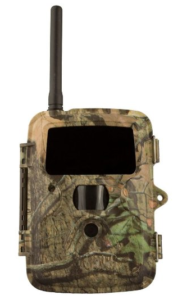 The Covert Special Ops Code Black 3G 60-LED Wireless game camera contains 60 invisible flash LEDs and it has a trigger speed of 1.2 seconds, which is a good speed wireless camera when compared to other models of similar price. Its average cost is $349-$399. The trail camera is ideal for game scouting, hunting, and home security. The device has to be used with an activated SIM card through AT&T, which allows the device to transmit and receive data over the wireless network. The camera owner can automatically receive game photos through the user’s cell phone or have them sent to an email address. Text messages can also be transmitted if the user desires. There is support for any cell provider that uses AT&T, T-Mobile or H20 wireless, but if problems occur, contact official support providers. Several user forums and online videos give step-by-step guidelines on the process, which may range from simple steps to advanced steps depending on which path the user decides to take. The camera’s resolutions can be changed to 3, 5, and 8 MP (megapixels), and is good for a range of 60+ feet. The device can store photos on the SD card up to a 32 GB. A 2-inch color viewer allows for changing options with time lapse photos, and there is a 2 phase timer switch, sensitivity levels, and choices for viewing battery usage and remaining memory. The camera requires 12 AA batteries that last for an extended period. It measures 10 x 10 x 3 inches, weighs 1 pound and has a mossy oak camouflage outer covering.
The Covert Special Ops Code Black 3G 60-LED Wireless game camera contains 60 invisible flash LEDs and it has a trigger speed of 1.2 seconds, which is a good speed wireless camera when compared to other models of similar price. Its average cost is $349-$399. The trail camera is ideal for game scouting, hunting, and home security. The device has to be used with an activated SIM card through AT&T, which allows the device to transmit and receive data over the wireless network. The camera owner can automatically receive game photos through the user’s cell phone or have them sent to an email address. Text messages can also be transmitted if the user desires. There is support for any cell provider that uses AT&T, T-Mobile or H20 wireless, but if problems occur, contact official support providers. Several user forums and online videos give step-by-step guidelines on the process, which may range from simple steps to advanced steps depending on which path the user decides to take. The camera’s resolutions can be changed to 3, 5, and 8 MP (megapixels), and is good for a range of 60+ feet. The device can store photos on the SD card up to a 32 GB. A 2-inch color viewer allows for changing options with time lapse photos, and there is a 2 phase timer switch, sensitivity levels, and choices for viewing battery usage and remaining memory. The camera requires 12 AA batteries that last for an extended period. It measures 10 x 10 x 3 inches, weighs 1 pound and has a mossy oak camouflage outer covering.
Best Infrared Trail Camera
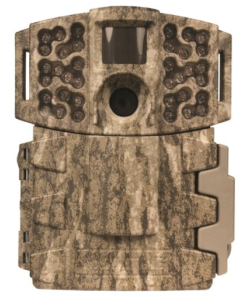 The best feature of the Moultrie M-880i Generation 2 is its invisible infrared flash. It averages in price from $98-$169. While other trail cameras give off a faint red glow while taking night images, the M-880i Gen2 flash is not visible to humans and animals. Its invisible 940NM IR LED flash technology is extremely helpful with field and home security use, as potential intruders won’t know they’re being filmed and animals will be unaware of any strange reflections. In addition to the infrared capability, the M-880i Gen2 has an 8MP (megapixels) resolution, a less than 1 second trigger speed, a 50 feet detection range, a 70 feet flash range, a managed memory feature, and a Quick Start menu that makes operational input simple and fast. It has greater image quality and improved battery life. Its image-compression technology allows for the storage of up to 2.5 more photos than earlier models. The camera’s Illumi-Night sensor delivers bright and clear night images, and a Motion Freeze feature decreases blur and provides extremely clear night and daytime shots. There are also two multi-shot modes that assure that whatever is being shot is in frame. A Burst mode automatically takes 3 rapid photos in a row, and a triggered multi-shot mode takes one photo for each motion trigger. The unit’s exterior is rugged, durable with a tough door and latch system that protects sensitive inner components such as the camera the lens and Infrared filter protected from outside elements. It has an excellent battery life of 17,000 images and requires 8 double AA batteries for power. The camera measures 4.7 x 3.4 x 5.8 inches, weighs 13.6 ounces and has a Mossy Oak Bottomland camouflage outer finish and a LED grid display that gives the unit a more balanced look.
The best feature of the Moultrie M-880i Generation 2 is its invisible infrared flash. It averages in price from $98-$169. While other trail cameras give off a faint red glow while taking night images, the M-880i Gen2 flash is not visible to humans and animals. Its invisible 940NM IR LED flash technology is extremely helpful with field and home security use, as potential intruders won’t know they’re being filmed and animals will be unaware of any strange reflections. In addition to the infrared capability, the M-880i Gen2 has an 8MP (megapixels) resolution, a less than 1 second trigger speed, a 50 feet detection range, a 70 feet flash range, a managed memory feature, and a Quick Start menu that makes operational input simple and fast. It has greater image quality and improved battery life. Its image-compression technology allows for the storage of up to 2.5 more photos than earlier models. The camera’s Illumi-Night sensor delivers bright and clear night images, and a Motion Freeze feature decreases blur and provides extremely clear night and daytime shots. There are also two multi-shot modes that assure that whatever is being shot is in frame. A Burst mode automatically takes 3 rapid photos in a row, and a triggered multi-shot mode takes one photo for each motion trigger. The unit’s exterior is rugged, durable with a tough door and latch system that protects sensitive inner components such as the camera the lens and Infrared filter protected from outside elements. It has an excellent battery life of 17,000 images and requires 8 double AA batteries for power. The camera measures 4.7 x 3.4 x 5.8 inches, weighs 13.6 ounces and has a Mossy Oak Bottomland camouflage outer finish and a LED grid display that gives the unit a more balanced look.
Best Trail Camera with Night Vision
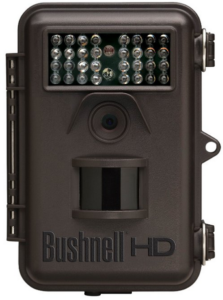 The Bushnell Weatherproof Trophy Cam HD Hybrid with Night Vision features true HD video resolution (1280×720 pixels) along with audio recording that produces striking clarity and detail. Video length is programmable for 1 second to 60 seconds and images are 8 MP (megapixels) of quality full color resolution. A New Field Scan 2 x feature provides two windows for image capturing that make the most of early evening and morning movement. The Hybrid Capture mode allows for capture on every trigger. The trigger speed is 0.6 second and the trigger is programmable from 1 minute to 60 minutes. The Hyper Night Vision feature with no-glow black LED models provides brighter, clearer and sharper night images with covertness in mind. There is also New Auto PIR that automatically adjusts for temperature changes (Lo/Med/High). Completed images show date, time, moon phase, temperature and name, and a GPS Geotag immediately embeds each photo with GPS coordinates for ideal tracking. It is external power compatible and will run up to a year on one set of batteries (4-8 AA). The camera measures approximately 5.25 x 3.75 inches, weighs 8.5 ounces and has a dark brown outer enclosure. Other features and accessories include a SD card slot with a 32 GB capacity, a LCD display for black and white text, and an adjustable web belt for attachment to a tree and (1/4-20) socket at the bottom end of the camera for placing on a tripod or other mounting device.
The Bushnell Weatherproof Trophy Cam HD Hybrid with Night Vision features true HD video resolution (1280×720 pixels) along with audio recording that produces striking clarity and detail. Video length is programmable for 1 second to 60 seconds and images are 8 MP (megapixels) of quality full color resolution. A New Field Scan 2 x feature provides two windows for image capturing that make the most of early evening and morning movement. The Hybrid Capture mode allows for capture on every trigger. The trigger speed is 0.6 second and the trigger is programmable from 1 minute to 60 minutes. The Hyper Night Vision feature with no-glow black LED models provides brighter, clearer and sharper night images with covertness in mind. There is also New Auto PIR that automatically adjusts for temperature changes (Lo/Med/High). Completed images show date, time, moon phase, temperature and name, and a GPS Geotag immediately embeds each photo with GPS coordinates for ideal tracking. It is external power compatible and will run up to a year on one set of batteries (4-8 AA). The camera measures approximately 5.25 x 3.75 inches, weighs 8.5 ounces and has a dark brown outer enclosure. Other features and accessories include a SD card slot with a 32 GB capacity, a LCD display for black and white text, and an adjustable web belt for attachment to a tree and (1/4-20) socket at the bottom end of the camera for placing on a tripod or other mounting device.
Trail Camera Concerns and Tips
- Trigger – Trail camera purchasers seem to be concerned with a trail camera that has a faster trigger, which translates to the camera loading more quickly between images and offering more pictures of pinpointed game.
- Camouflage – Trail cameras that offer camouflage outer coverings are better hidden from view and are not as likely to be seen, vandalized or stolen.
- Warranty – Trail cameras are an investment and having a good warranty covers that investment. With the length of time that a trail camera is left out in the elements, it needs to be a durable and dependable device and have the necessary coverage to replace it if necessary.
- Battery life – A trail camera’s battery life is important to consumers and when purchasing a trail camera, this aspect should be researched before purchase. Trail cameras with video features utilize considerable more battery power, so that feature should be checked as well for required power.
- Video function – With a video function you can track game by recording several minutes of footage at a time. A video function can also integrate audio and HD quality can be incorporated as well.
- Flash range – A trail camera with a longer flash range means that nighttime photo shooting would not have to be as close as it would be with a shorter range flash.
- Detection circuit – The detection circuit of a trail camera is extremely important as it includes a number of functions that manage the detection process. The trigger time, recovery time, and the detection zone are all part of the circuit, and these numbers need to be checked in the specifications for the particular trail camera chosen.
- Detection zones – Detection zones with trail cameras vary, and a better quality camera will provide a distance of 85 feet or more.
- Viewing screen – A trail camera that has a viewing screen provides a means for viewing photos without having to download them. It is a time saver in and out of the field.
- Security enclosures – Trail camera security devices and security cables are usually sold separately. With these added devices, a trail camera is protected from animals, hunters and others wanting to vandalize or steal the camera. Check into acquiring a security case or necessary locking device before purchase and make sure it is compatible with your camera.
- Photo /Video storage – Choose a trail camera that has slots for memory cards. Internal camera memory alone will not usually suffice when taking photos. Keep other cards handy once one is full and ready for replacement.
Conclusion
Trail cameras are an extra set of eyes, ears, and hands for hunters, and security minded individuals. There is a lot of waiting around and hiding involved with scouting and hunting, and a trail camera can save a huge amount of time in that tedious process. Of course, successful hunting ventures involve finding the right areas for pinpointing game and a trail camera opens up those areas to distinct possibilities. Choosing a suitable camera for success can be confusing, but the information provided here should create an opening for choices and further research into the trail camera that is right for you.
